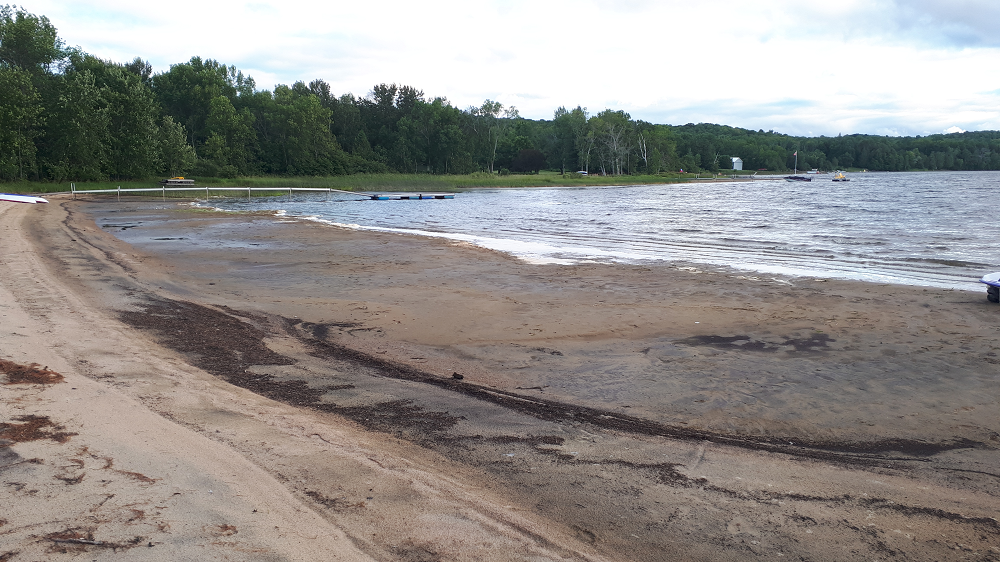Drought conditions throughout the region caused abnormally low water levels at many Haliburton lakes and beyond, according to the Coalition for Equitable Water Flow (CEWF).
The Trent-Severn Waterway (TSW), which manages water flow throughout the region, reported rainfall amounts for May and June have been 25 to 50 per cent below normal for the area. That left lakes below long-term levels throughout the early summer, causing them to be impacted more by the TSW’s annual system drawdown. It has continued to reduce water levels in lakes throughout Haliburton, with decreases projected until at least Aug. 9, as of its July 26 update.
CEWF chair Ted Spence said they are also reducing water flows in the Otonabee River at the south end of the system, to match the reduction in flow elsewhere.
“Our group is very happy they’re looking very basin-wide in terms of water management,” Spence said. “If they hadn’t done that, we’d be much lower.”
The drawdown is done based on factors such as lake storage capacity, fish spawning, flood mitigation precipitation and maintaining flows downstream, according to the TSW.
Spence said the drawdown helps the TSW fill its reservoirs and bring them to a normal level come fall. The lower water levels caused by the drought and drawdown impacted boating and docks throughout the system. However, recent rainfall has reduced the drawdown rate, according to the CEWF. Spence said climate change is creating more seasons with extreme weather and people will have to adjust expectations accordingly.
“What we are seeing is more periods of extended droughts and more extreme rainfall events,” he said. “Everybody needs to adjust their own shoreline to adapt more to changing circumstances.”
That includes flow-through lakes accustomed to consistent water levels, such as the Maple, Beech and Cameron Lakes and Area Property Owners’ Association (MBC), which Spence said he has heard concerns from.
“We’re trying to manage for everybody’s benefit and it’s unfortunate. If you’re on a river or a flow-through lake, you are susceptible to significant change,” he said.
But MBC vice-president Charlie O’Connor said people in the area are frustrated by how the waterflow is being managed, to the point of writing a letter to MP Jamie Schmale addressing their grievances. In the letter, they said members are worried about declining property values and whether the waterflow needs might be due to Peterborough’s increasing size and water demands. They asked for a review of TSW’s processes.
O’Connor said periodic low lake levels have hit the area hard this year – his own beach receded about 25-30 feet earlier in July – and there is confusion about the reasoning behind the drawdown. He said the powers at be also need to communicate better about it and give people more forewarning to address their boats and docks.
“Common courtesy of letting us know they’re doing something that does affect us,” O’Connor said.
Still, Spence said the TSW’s approach is sound. He noted the success of TSW’s system-wide approach to help prevent extreme floods – as Minden experienced in 2013 and 2017 – by leaving more room for rain in its reservoirs during spring. It is a complex system to manage, Spence said, and people should consider it as a whole.
“We do understand the approach they’re trying to take. If it doesn’t rain for threeand-a-half months, I don’t think anybody has the right answers,” he said. “The right answer is we would have liked to have our normal climate and rainfall, but we don’t.”





